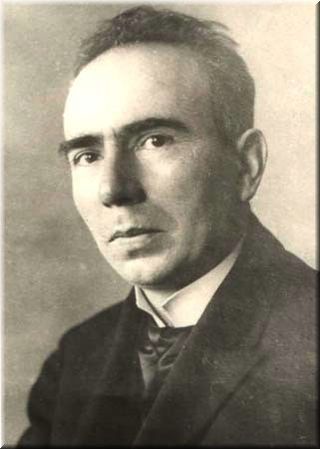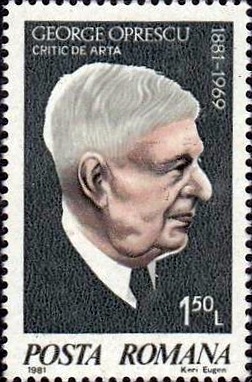Related Research Articles

Wallachia or Walachia is a historical and geographical region of modern-day Romania. It is situated north of the Lower Danube and south of the Southern Carpathians. Wallachia was traditionally divided into two sections, Muntenia and Oltenia. Dobruja could sometimes be considered a third section due to its proximity and brief rule over it. Wallachia as a whole is sometimes referred to as Muntenia through identification with the larger of the two traditional sections.

Constantin Brâncoveanu was Prince of Wallachia between 1688 and 1714.

Vasile Pârvan was a Romanian historian and archaeologist.

Gheorghe (George) I. Brătianu was a Romanian politician and historian. A member of the Brătianu family and initially affiliated with the National Liberal Party, he broke away from the movement to create and lead the National Liberal Party-Brătianu. A history professor at the universities of Iași and Bucharest, he was elected titular member of the Romanian Academy. Arrested by the Communist authorities in 1950, he died at the notorious Sighet Prison.

Nicolae Vermont was a Romanian realist painter, graphic artist and muralist. He was noted for his wide range of subjects and his interest in social issues, and was an associate of the post-Impressionists Ştefan Luchian and Constantin Artachino, as well as a friend of the controversial art collector and political figure Alexandru Bogdan-Piteşti.
Romanian architecture is very diverse, including medieval, pre-World War I, interwar, postwar, and contemporary 21st century architecture. In Romania, there are also regional differences with regard to architectural styles. Architecture, as the rest of the arts, was highly influenced by the socio-economic context and by the historical situation. For example, during the reign of King Carol I (1866–1914), Romania was in a continuous state of reorganization and modernization. In consequence, most of the architecture was designed by architects trained in Western European academies, particularly the École des Beaux-Arts, and a big part of the downtowns of the Romanian Old Kingdom were built during this period.
Camil Bujor Mureșanu was a Romanian historian, professor and author.

Toma Gheorghe Barbu Socolescu a Romanian architect, son of Toma T. Socolescu and grandson of Toma N. Socolescu, functionalist in spite of himself, he had to espouse the directives of the Socialist Republic of Romania.
The 1954 season was Dinamo București's sixth season in Divizia A. For the first time, Dinamo reaches the final of Romanian Cup, but loses to Metalul Reşiţa. In Divizia A, Dinamo ends third, behind champions Flacăra Roşie and CCA. For the third year in a row, the goalscorer of Divizia A is a Dinamo player. Alexandru Ene scored 20 goals out of 62 of the entire team.

Carol Benesch was a Silesian architect of Historicism and Eclecticism orientation established in the Kingdom of Romania.

Constantin G. Cantacuzino, also known as Costache Cantacozino or Costandin Cantacuzino, was the Caimacam (Regent) of Wallachia in September 1848–June 1849, appointed directly by the Ottoman Empire. A member of the Cantacuzino family, he had emerged as a leader of the conservative boyardom during the Regulamentul Organic period. As a commander in the Wallachian militia, he organized in 1831 the first elections for Bucharest's Town Council, and subsequently served as one of the Bucharest Governors. He first played a major part in national government from 1837 to 1842, when he served Prince Alexandru II Ghica as Postelnic and Logothete. During that interval, he clashed with his own brother Grigore Cantacuzino, who sided with the liberal current.

George Oprescu was a Romanian historian, art critic and collector. Born into a poor family, he developed a taste for the fine arts early in life, as well as for the French language, which he taught into his forties. Subsequently, working for the League of Nations, he turned his attention to art history, becoming a professor in the field at the University of Bucharest in 1931. He was also a museum curator and magazine editor, and in 1949 established the Institute of Art History, which he led for two decades until his death. His substantial private collection is now in the hands of various institutions, while his written body of work helped lay the foundation for art history to become a serious discipline in his country.

Cantacuzino Palace is located on Calea Victoriei no. 141, Bucharest, Romania. It was built by architect Ion D. Berindey in the Beaux Arts style, having a few Rococo Revival rooms. Today it houses the George Enescu museum.
Cristofi Cerchez was a Romanian engineer and architect. He built approximately 50 buildings in various cities of Romania over his nearly 50-year career. His architecture covers a wide range of styles from traditional to eclectic to modern, as well as private, civic and religious edifices. Among the buildings he worked on were the Bucharest Palace of Justice, the State Archives wing of the Mihai Vodă Monastery, the monastery of Vălenii de Munte, and the Nicolae Minovici Folk Art Museum.

Gheorghe Balș was a Romanian engineer, architect and art historian.

Diicul or Dicul Buicescul, also known as Diicu Buicescu and Diicu din Epotești, was a Wallachian statesman, noted as the designated heir of Prince Matei Basarab. A commoner on his father's side, he belonged to the boyardom of Oltenia through his mother's family. His political rise began when Matei, his maternal relative, seized the throne. Diicul alternated civilian offices and command postings in the Wallachian military forces, culminating with his appointment as Spatharios in January 1645. His main military involvement came during the wars opposing Wallachia and the Principality of Transylvania to Vasile Lupu's Moldavia. He saw action during the 1650 invasion of Moldavia, resulting in Gheorghe Ștefan's appointment as the puppet Moldavian Prince. In 1653 Buicescul was soundly defeated by Lupu and his Cossack allies, whose invasion of Wallachia was only overturned by Prince Matei's stand at Finta.

Stroe Leurdeanu, also known as Stroe (sin) Fiera, Stroie Leurdeanu, Stroe Leordeanu, or Stroe Golescu, was a Wallachian statesman and political intriguer, son of Logothete Fiera Leudeanu. He began his career with the Wallachian military forces, serving as Spatharios and seeing action in the Polish–Ottoman War of 1633. Related by marriage to the Craiovești dynasty, he emerged as one of the country's most important officials under Prince Matei Basarab: as Vistier, he was in charge of the princely treasury, and also became a regent in 1645. Matei also adopted Stroe's son, Istratie Leurdeanu, but in 1651 turned against the family, and found Stroe guilty of embezzlement. He returned to high favor under a new Prince, Constantin Șerban, who made him his Logothete.

Romanian Revival architecture is an architectural style that has appeared in the late 19th century in Romanian Art Nouveau, initially being the result of the attempts of finding a specific Romanian architectural style. The attempts are mainly due to the architects Ion Mincu (1852–1912), and Ion N. Socolescu (1856–1924). The peak of the style was the interwar period. The style was a national reaction after the domination of French-inspired Classicist Eclecticism. Apart from foreign influences, the contribution of Romanian architects, who reinvented the tradition, creating, at the same time, an original style, is manifesting more and more strongly. Ion Mincu and his successors, Grigore Cerchez, Cristofi Cerchez, Petre Antonescu, or Nicolae Ghica-Budești declared themselves for a modern architecture, with Romanian specific, based on theses such as those formulated by Alexandru Odobescu around 1870:
"Study the remains – no matter how small – of the artistic production of the past and make them the source of a great art (...) do not miss any opportunity to use the artistic elements presented by the Romanian monuments left over from old times; but transform them, change them, develop them ..."
References
- ↑ Institutul de Arheologie "Vasile Pârvan". Gheorghe I. Cantacuzino
- ↑ Premiile Academiei Române pe anul 2001 (decernate în 2003) [www.acad.ro/com2003/doc/premii2001_decernate2003.doc]